Kevin Lingenfelser has been working in visual effects for almost 30 years. He has worked in many studios such as Cinesite, Digital Domain, FuriousFX and FuseFX. His filmography includes many projects such as Jack The Giant Slayer, Ender’s Game, The Orville and Shadow and Bone.
What is your background?
Nearly 30 years and 93 Film and Episodic VFX credits based on a broad experience as a Digital Compositor and VFX Supervisor. Worked at the following VFX facilities – Cinesite Hollywood, Digital Domain, FuriousFX and FuseFX before becoming a Production VFX Supervisor.
How did you get involved on this series?
Once I learned of Netflix Producing a new Resident Evil series I reached out to the VFX team and expressed my interest in being a part of the series.
What was your feeling to be part of such an iconic universe?
I was very excited to bring a new take on the series to fans, old and new alike. With my main goal to bring to screen the most authentic and realistic versions of the iconic Resident Evil creatures.
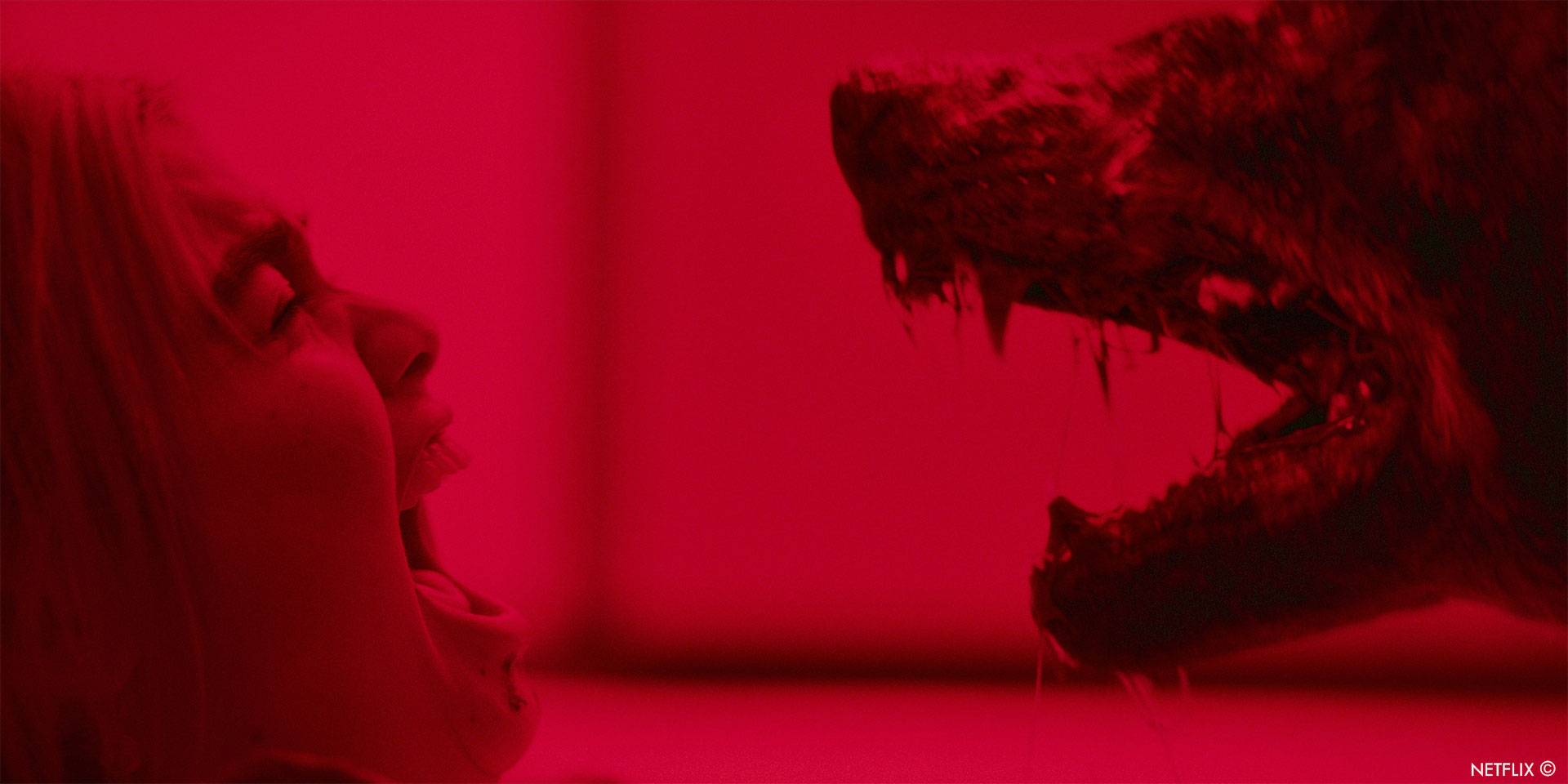
How was the collaboration with the showrunner and the directors?
I really enjoyed my experience with Showrunner, Andrew Dabb. He proved to be very easy-going and approachable, yet decisive which made my job easier. The four Directors (each with a block of two episodes) all brought their unique styles and experiences to the show. It was my job to make sure they understand what it was I needed to accomplish on-set during Production for our Vendors. As well as ease any trepidation they had with working with VFX.
What was their approach and expectations about the visual effects?
Collectively we agreed to approach the VFX for the series in as realistic and grounded manner as possible. Even though we were creating a 75 foot long Caterpillar, a huge Spider, Lickers, a 100 footlong Saltwater Crocodile, etc. Everything was approached with an inordinate amount of reference materials. Even going so far as to cage dive in South Africa with VFX Producer Casey Conroy and DP Carmen Cabana to view Nile Crocodiles to obtain close-up reference photos and video.
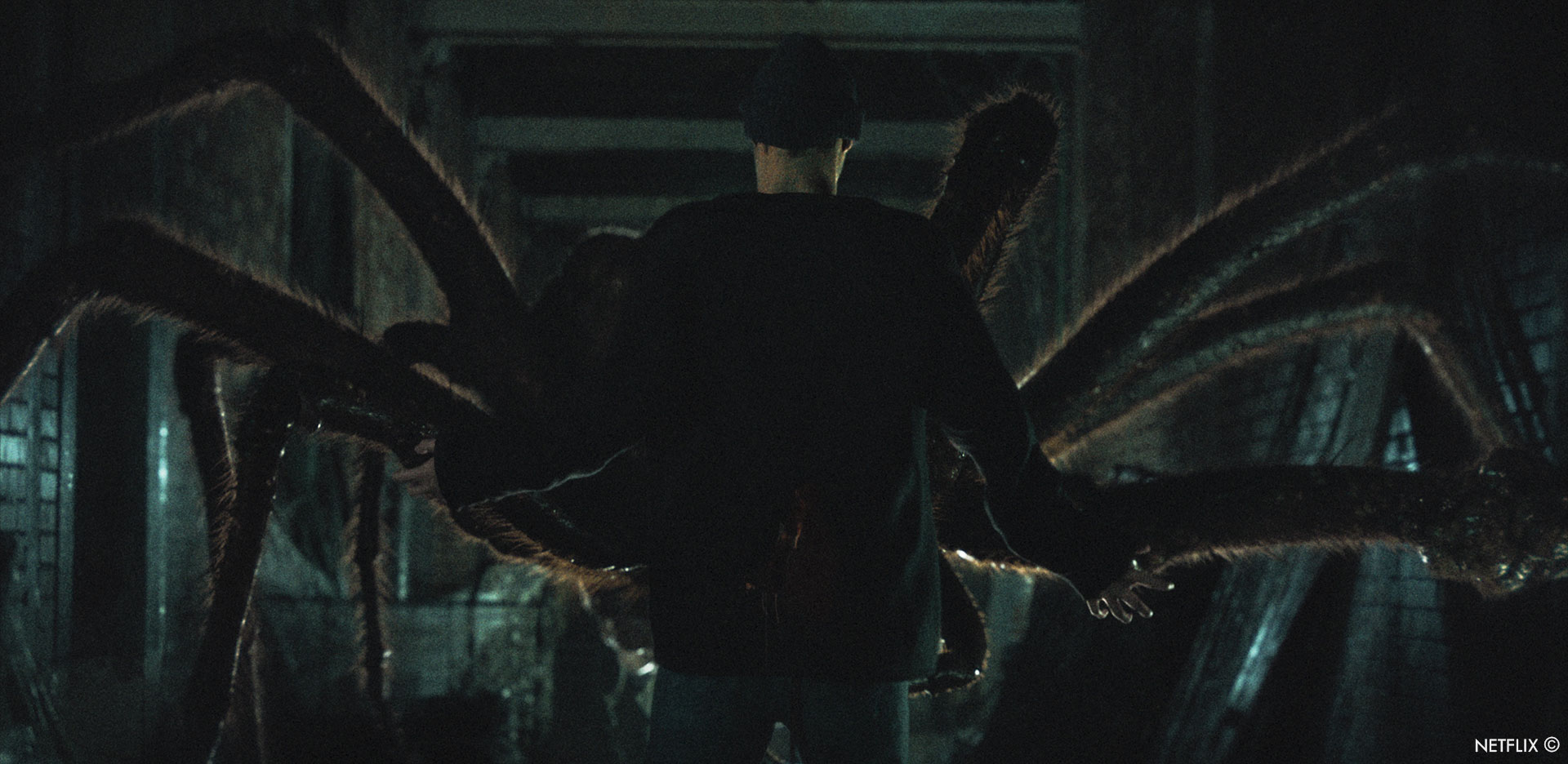
How did you organize the work with your VFX Producer?
With the help of our LA based coordinator, Javier Hernandez and South Africa based coordinator Naz Ntutha we tracked all data and shots using ShotGrid. QTake and Moxion were used for on-set and dailies respectively and Frankie and Zoom for all shot reviews. On-Set data was acquired by our two Data Wranglers Britt Hurrell and Brad McGee.
How did you choose the various vendors?
I had a pretty good idea which Vendors I wanted to utilize on the show, it was too large, shot count wise, to give to just one Vendor. With our collective knowledge of each Vendor’s particular strengths, weaknesses and bandwidth, we were able to bid across numerous facilities and eventually narrow down to the core team.
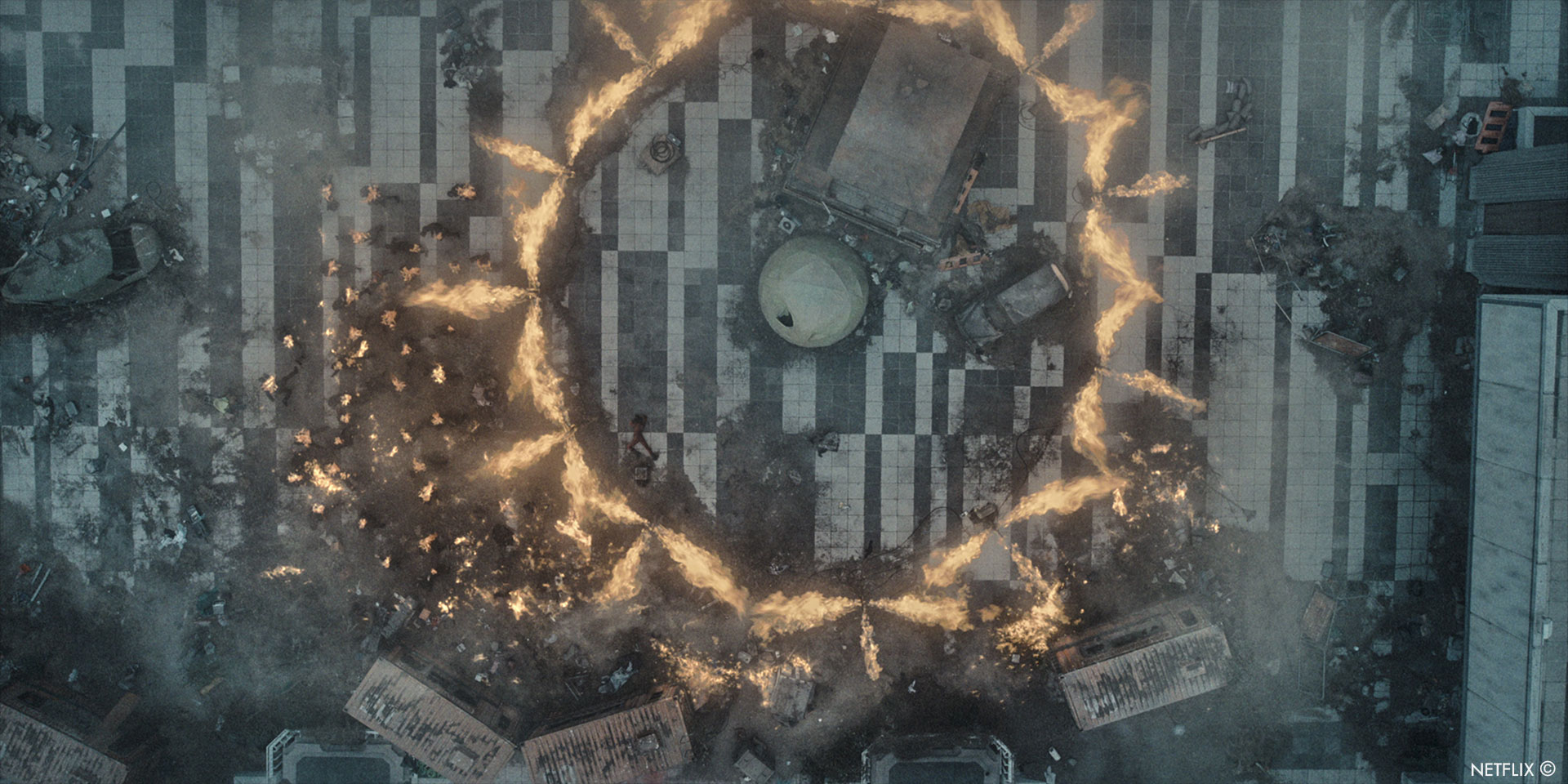
Can you tell us how you split the work amongst the vendors?
Based on our shoot and post schedules, I knew that wouldn’t be ideal or efficient to go with just one vendor. The work had to be parsed out. The below is a partial list of sequence breakouts.
Rodeo FX
Caterpillar in Episode 1.
Cerberus (Doberman) in Episodes 1, 3 and 8.
Infected Rat in Episodes 2 and 3.
Spider in Episode 3.
Infected Lizard in Episode 8.
Zeros burning in Episode 1.
Lab Fire and Lisa Trevor Eye in Episode 5.
Motion-Control Clones in Episode 7.
University Ship in Episodes 6, 7 and 8.
MPC (formerly Mr. X when working on the series)
London DMP in Episode 1.
Zero Crowd Sims in Episode 1 and 2.
Barry Zero in Episode 2.
Dover and Bar DMPs in Episode 2.
Chunnel DMP in Episode 3.
Licker Attack in Episode 3.
Umbrella Helicopters.
Tyrant hand bursts out of rubble in Episode 8.
ILP
Saltwater Crocodile in Episodes 7 and 8.
Mr. Wolf
Responsible for a plethora of invisible VFX.
Building degradation in Episode 1.
Muzzle flashes, shell casings, impact hits and blood in Episodes 4 through 8.
Monitor, phone GFX and inserts throughout all 8 Episodes.
Baxter ‘John Wick’ Oner in Episode 4.
Digital Frontier
Zero Crowd Sims in Episodes 7 and 8.
Kronos Studios
61 unique one-off type shots across all 8 Episodes.
Including, but not limited to, retimes and fluid-morphs.
NeoReel
Previs of major sequences in Episodes 6, 7 and 8.
Studio8
Complex 2D and 3D clean-up in all Episodes.
As well as 2D Split Composites.
Alena Cochran
In-House VFX Artist responsible for most of the GFX and insert work, clean-up and 2D split composites.
MARZ
Camera Rig reflection removal on Billie in bathroom of Episode 3.
Angel chest infection in Episode 6.
Gore enhancement to Girl Zero in Episode 6.
BlackGinger
Provided Pre-Vis for multiple sequences across the 8 Episodes.
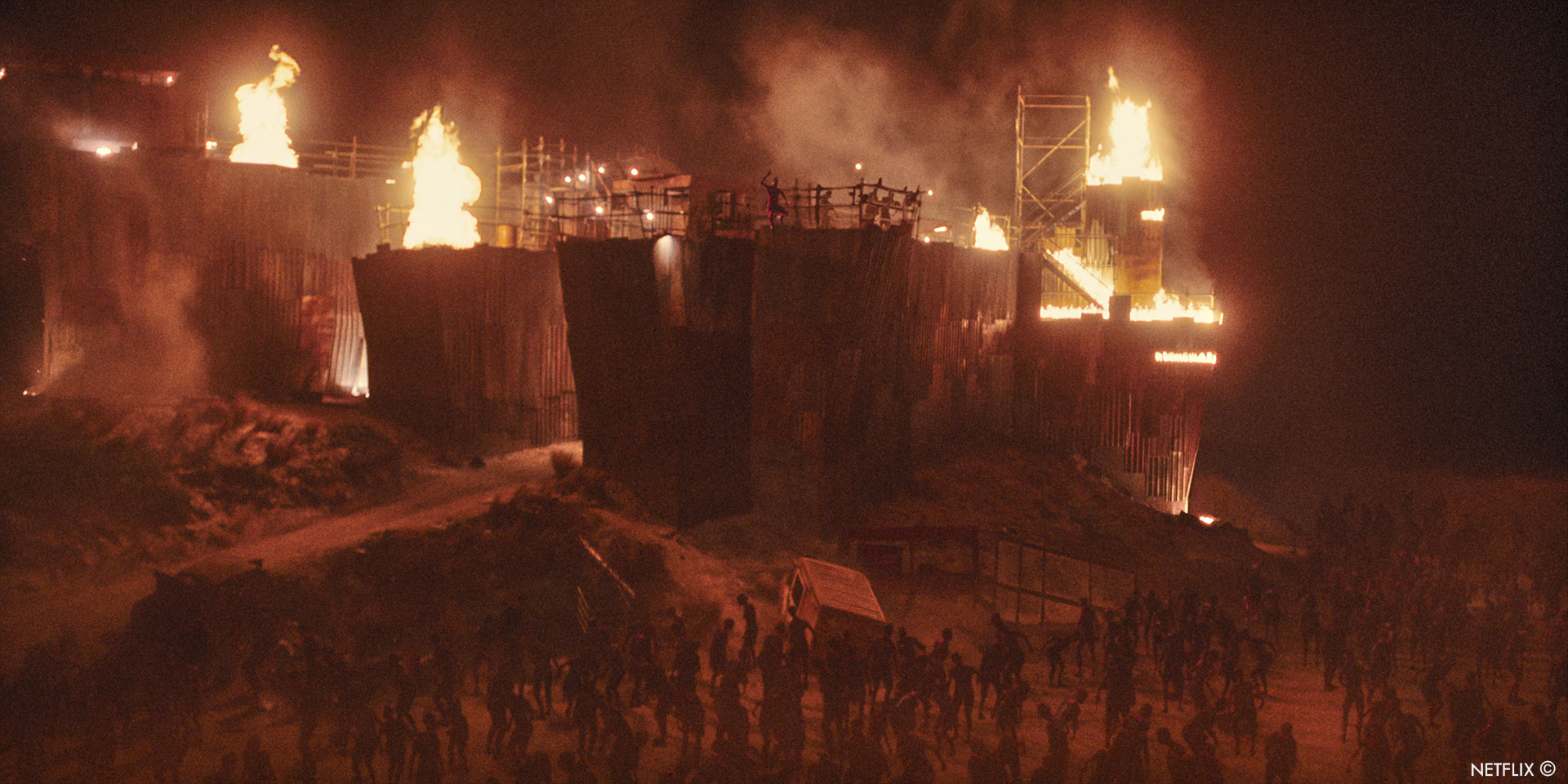
How was the collaboration with their VFX Supervisors?
Working with all the Vendor VFX Supervisors proved very easy and rewarding. A common language and short-hand developed over the course of the series between myself and them. There was a real passion amongst all of the Supervisors to provide the best possible work and there was no shortage of unique and interesting ideas to enhance shots.
Vendor VFX Supervisors:
Sebastien Francoeur – Rodeo FX
Nicolas Hernandez – ILP
David Jones – MR. X
John Pierce – Mr. Wolf
Chad Finnerty – Digital Frontier
Eddie Englander – MARZ
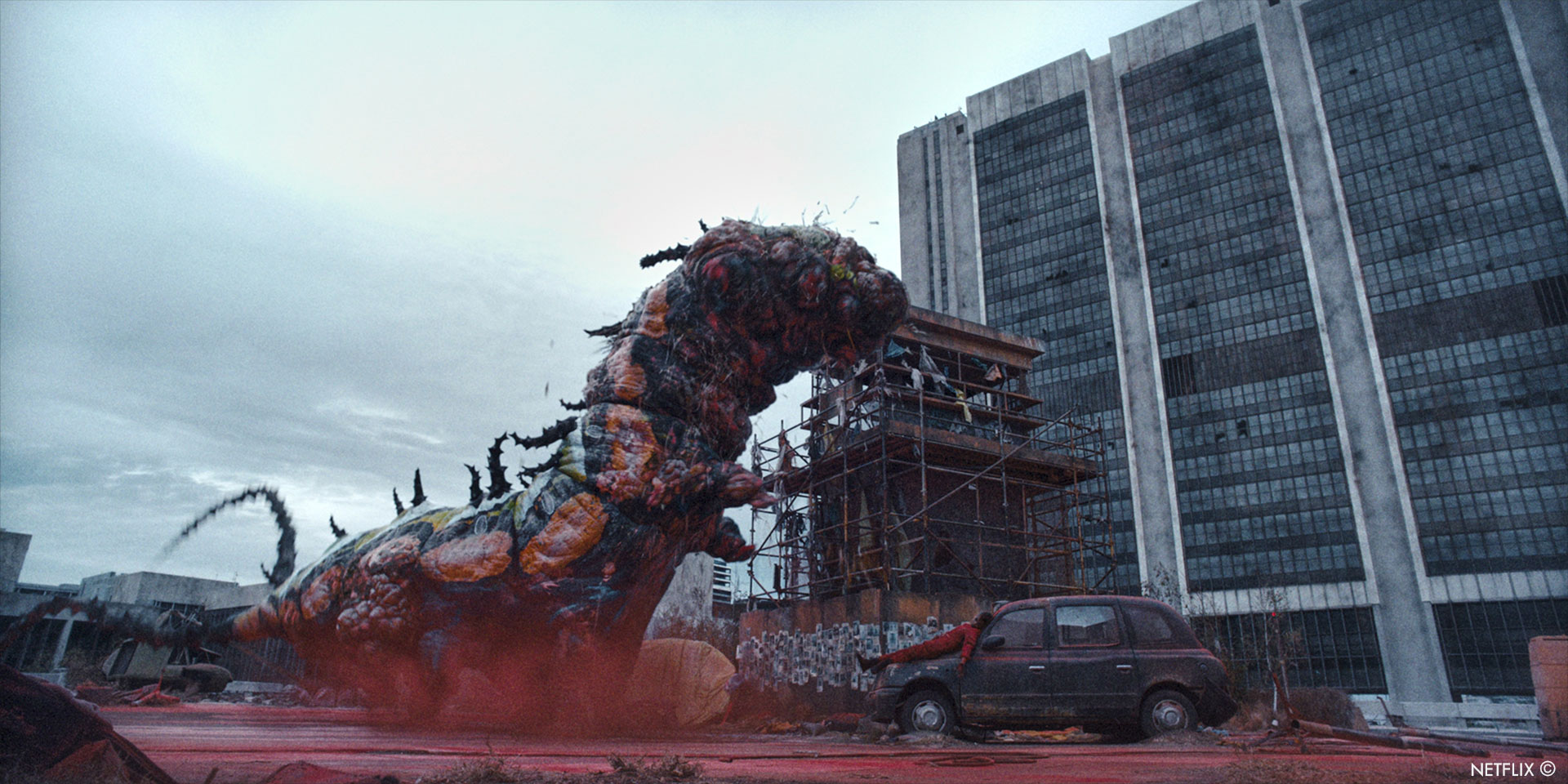
The series is full of well known creatures and new ones. How did you work with the art department?
All the creatures were designed and achieved with my guidance and direction along with the respective Supervisor and their internal teams. Using references from the Capcom video games as needed for the B.O.W.s (Bio-Organic Weapons) like Grave Digger, the Cerberus and Lickers. Real world wildlife references were utilized to further ground the designs to make them as realistic as possible. e.g. the Grave Digger/Caterpillar was based on an actual species the Director chose, known as the Brahmaea Hearseyi.
Can you elaborate about their design and creation?
I worked closely with each Vendor tasked with bringing our creatures to life. We gave them relevant reference materials, while at the same time allowing them the creative freedom to augment and add their own spin. The only caveat was that the creatures had to show signs of infection from the T-Virus – e.g. abhorrent mutations and rampant desiccation.
How did you recreate the iconic Lickers?
Mr. X had endless experience with numerous iterations of the Licker over the course of the six Resident Evil films. I didn’t want to simply “reuse” their CG model, rig, textures, etc. I was looking for something more realistic. For example, we decreased the size of the “swollen brain” look from the games as I always felt it looked like too much of an easy target.
Mr. X Supervisor David Jones also found a novel solution to the issue of the body physics of the elongated tongue and where it resides internally in the body of the Licker. Woodpeckers have one the longest tongues in the animal kingdom, as such they developed a unique physical means of having the tongue wrap around the brain to accommodate the length.
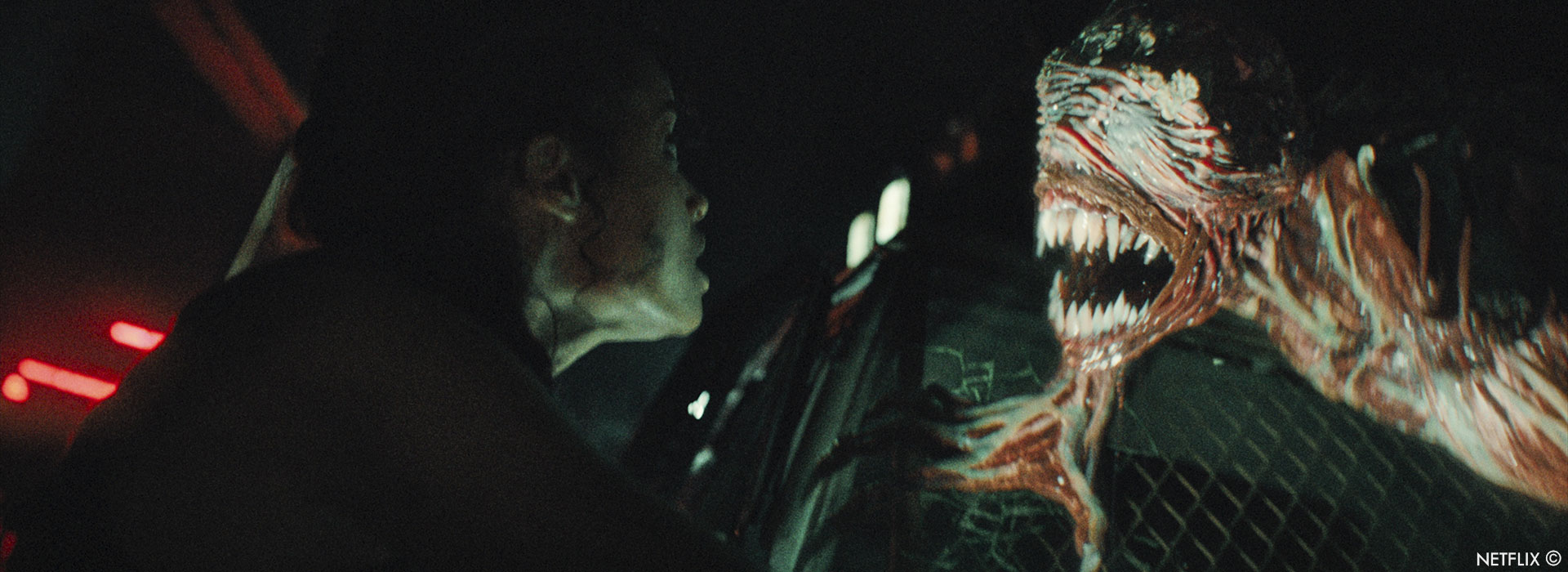
Some of them are really big. How does that affect your work and especially the animation?
The Caterpillar and Crocodile were more challenging since they were the two largest in the series.
Any “stuffies” we tried to fabricate proved too cumbersome. We did have several scale accurate metal rods and ropes to be used as reference for both the camera and Actors. And since the scale of our infected Caterpillar and Crocodile were 150 times and 10 times size, respectively, it was a tedious process to animate the creatures with proper locomotion and mass. That being said, I couldn’t be more proud and thrilled with the results.
Can you elaborates about the impressive giant crocodile?
After seeing ILPs incredible work in Jurassic World: Fallen Kingdom, I knew I needed them to do the Infected Saltwater Crocodile. Nicolas Hernandez and his team met the challenge and jumped right into designing the Croc and the variations of mutations and infections. They also put the same attention to detail and realism when animating the beast to ensure it moved not just like a Crocodile, but a hundred foot long Crocodile.
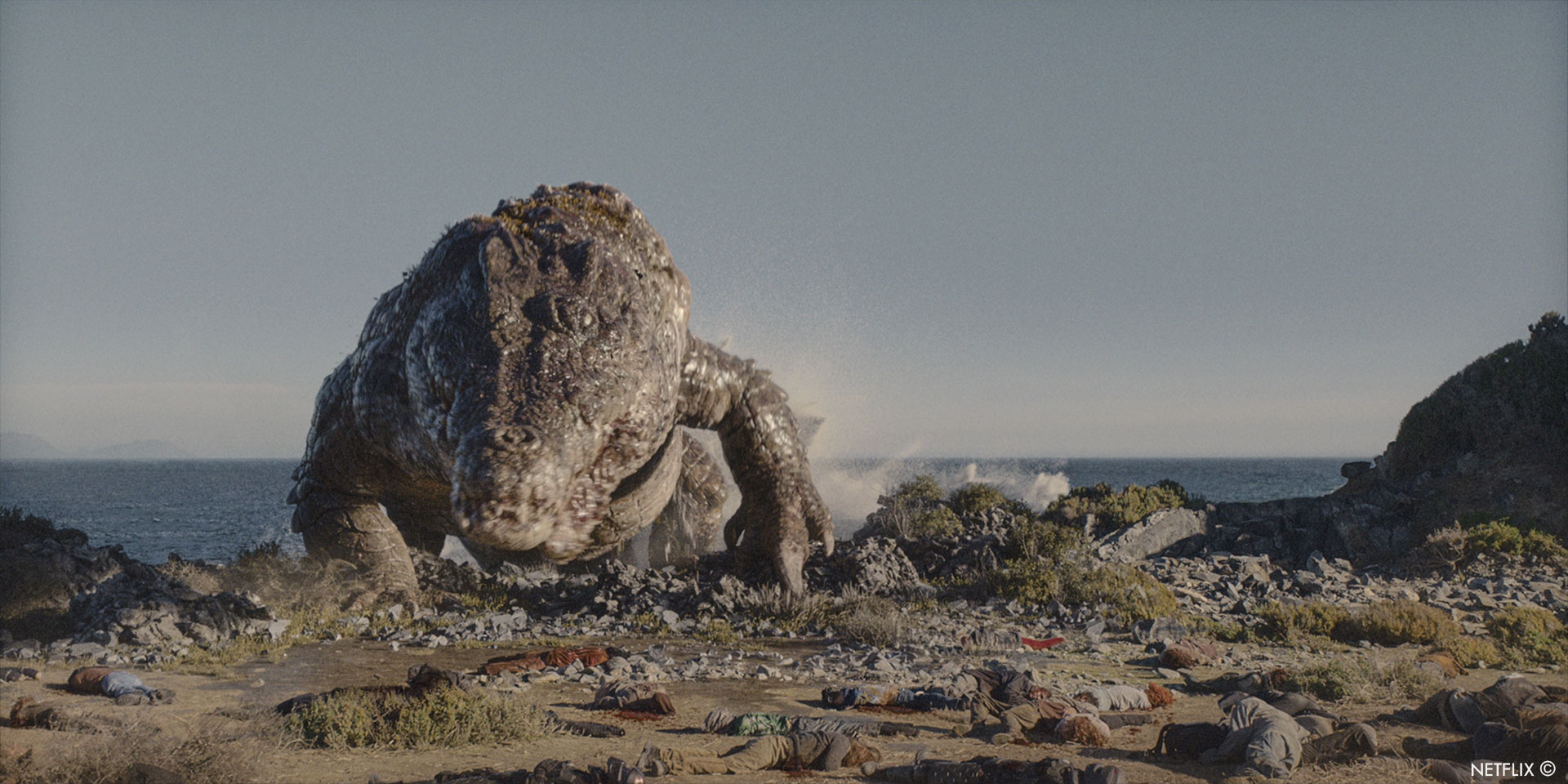
Which one was the most complicate to create and why?
The Doberman aka Cerberus was probably the most difficult to manifest. Even with it being infected and desiccated it still had to look and move like a real dog. Everyone knows what a dog should look and move like, even without extensive animation or VFX expertise. It’s just intuitive, subconscious knowledge. So, nailing the look, broad movement and action of the dog was critical. We had one practical doberman that was used as camera line-up and overall reference. His name was Diesel and he was a true beast with a lot of energy and up for anything. That was a huge help, but Rodeo FX still had to create a fully realized CG version in order to do very specific actions. Ninety percent of what is on screen is the CG version of Diesel.
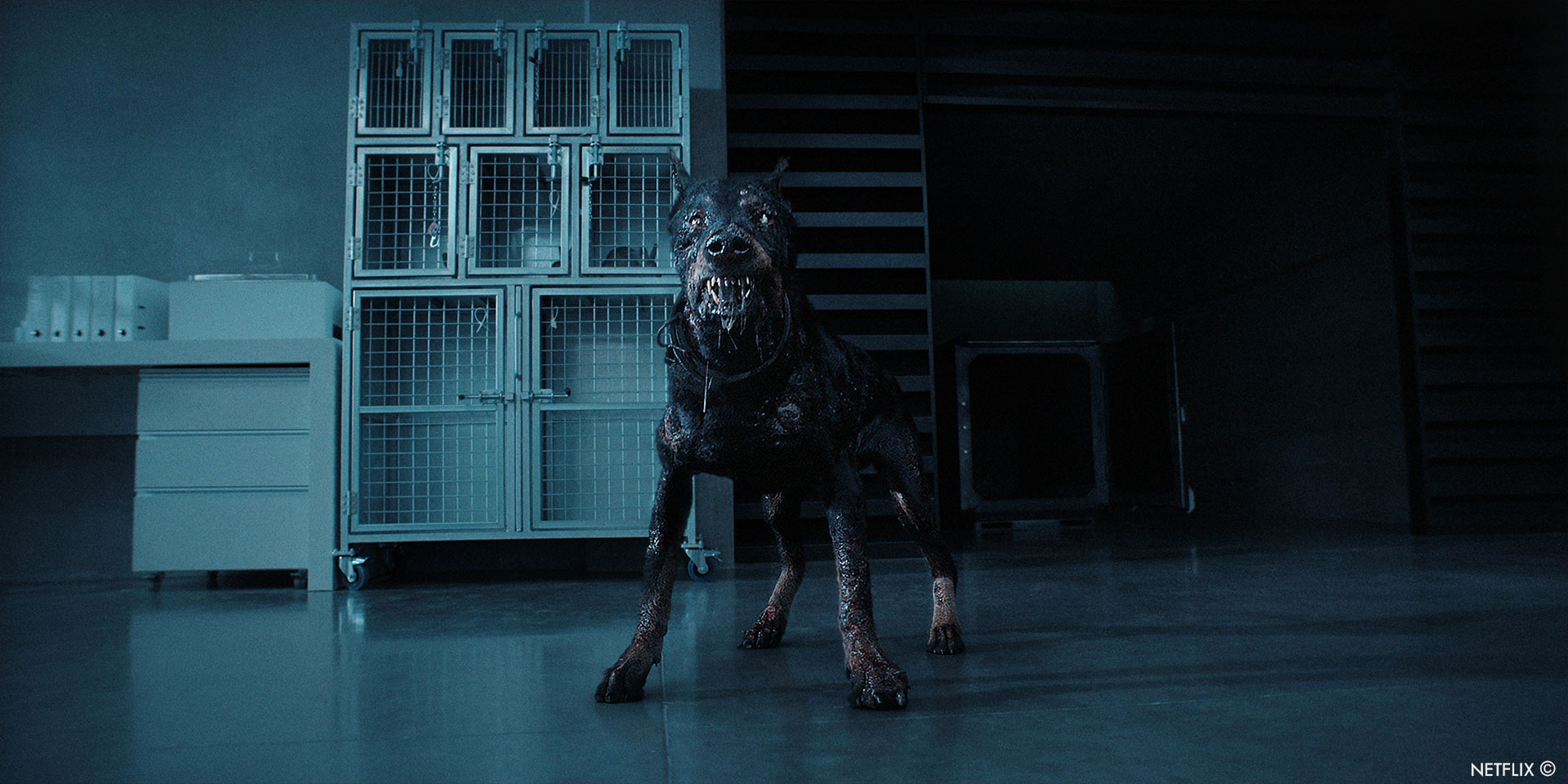
Can you elaborates about the various environment creation and especially the New Raccoon City?
Most of the New Raccoon City locations in the series were sourced in and around Cape Town.
Cheré Botha special needs school was used for NRC High School.
The Norval Foundation served as Umbrella HQ exteriors.
NRC exteriors were shot at Paardevlei Estates.
The late evening bird’s eye view of Umbrella HQ and NRC was a combination of stock footage and CG Building with DMP by Rodeo FX.
Interiors of the Wesker House and Umbrella HQ were Set constructions.
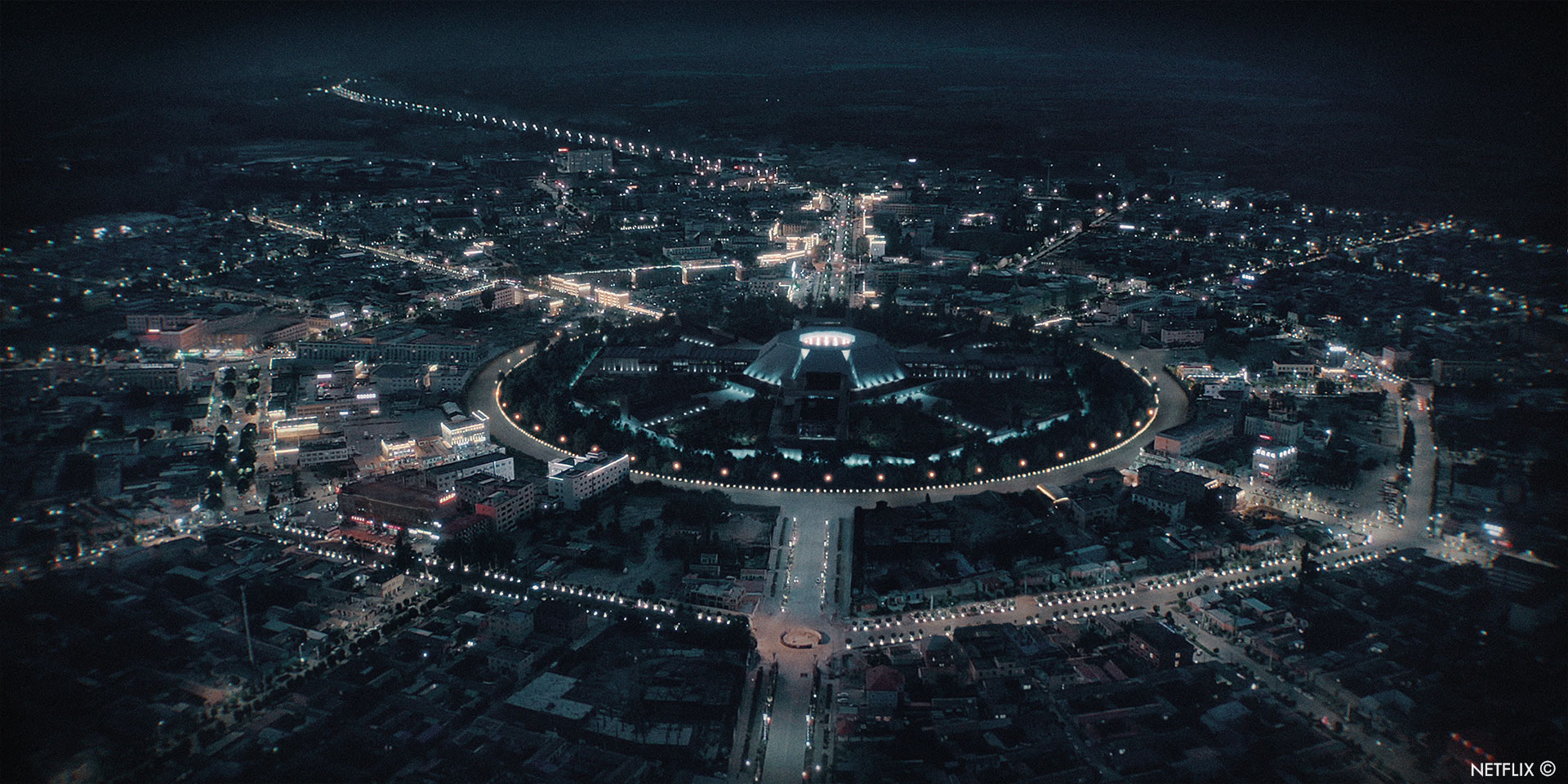
What kind of references and influences did you receive for these locations?
Production Designer James Foster very much had a specific design aesthetic in mind with the octagonal Umbrella logo influencing a majority of the world. Including, but not limited to, the Umbrella Drones as done by Mr. X, light fixtures, even earrings.
Can you tell us more about the London environment?
James also had concepts in mind for these two shots. The classic gloomy, dreary London with post-apocalyptic destruction as a cherry on top. His Art Department provided us key art, which we passed onto MR. X to visualize using a partially dressed set from Cape Town – which was an unused and incomplete section of freeway to be exact.
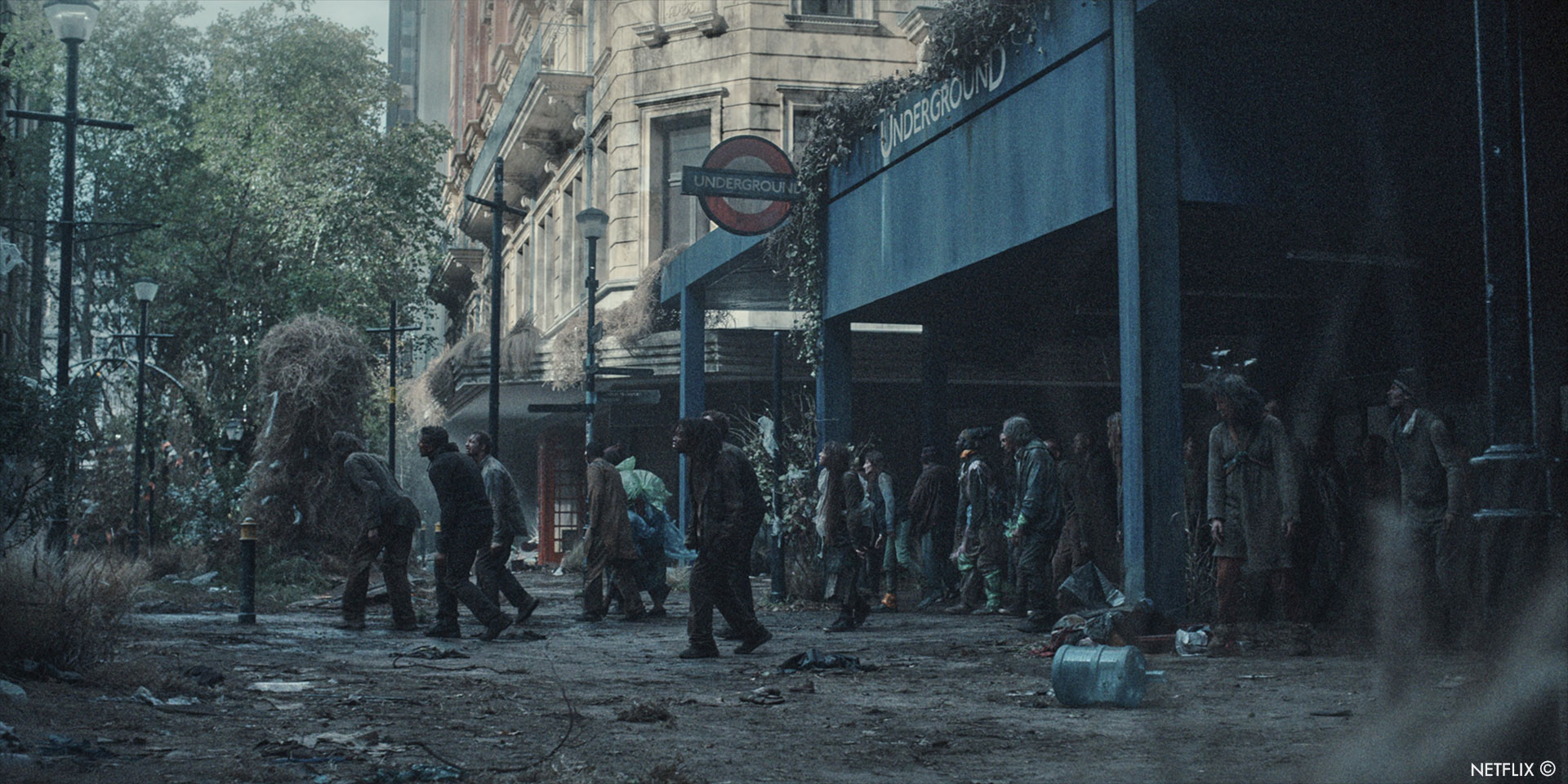
The series is full of motion graphics and holograms. Can you elaborates about their creation and animation?
The Joy Bear hologram in Episode 1 was based off a 2D design that was then made by Kerry Von Lillienfeld and his Props team. Rodeo FX did photogrammetry of one of the Prop Bears and key frame animated him doing a dance along with lip-sync to the “Joy” jingle. Mr. X created the map holograms seen at Brighton Freehold in Episode 1.
What was your approach about the clones?
Once I read the script for Episode 7 detailing the Wesker Clone sequence, I knew I wanted to make use of Motion-Control for key moments in the sequence. Having OG Wesker, Albert, Bert and Alby in the same room at once presented unique opportunities. We did utilize body doubles for simple over the shoulder shots that could be filmed in camera. And lock-offs for wide shots where all four Weskers can be seen. The Talos Mo-Co rig was used for the shot where OG Wesker (in black leather) enters the Bunker and proceeds to intimidate the other three Weskers at their workstations. It was shot as five passes – four with Lance Reddick in each of the Wesker character’s wardrobe and make-up. Then the fifth pass, which was the clean plate. There were 2 smaller scale Mo-Co shots involving just two of the Wesker Clones. All involved rotoscoping and some warping where Clones interacted with one another.
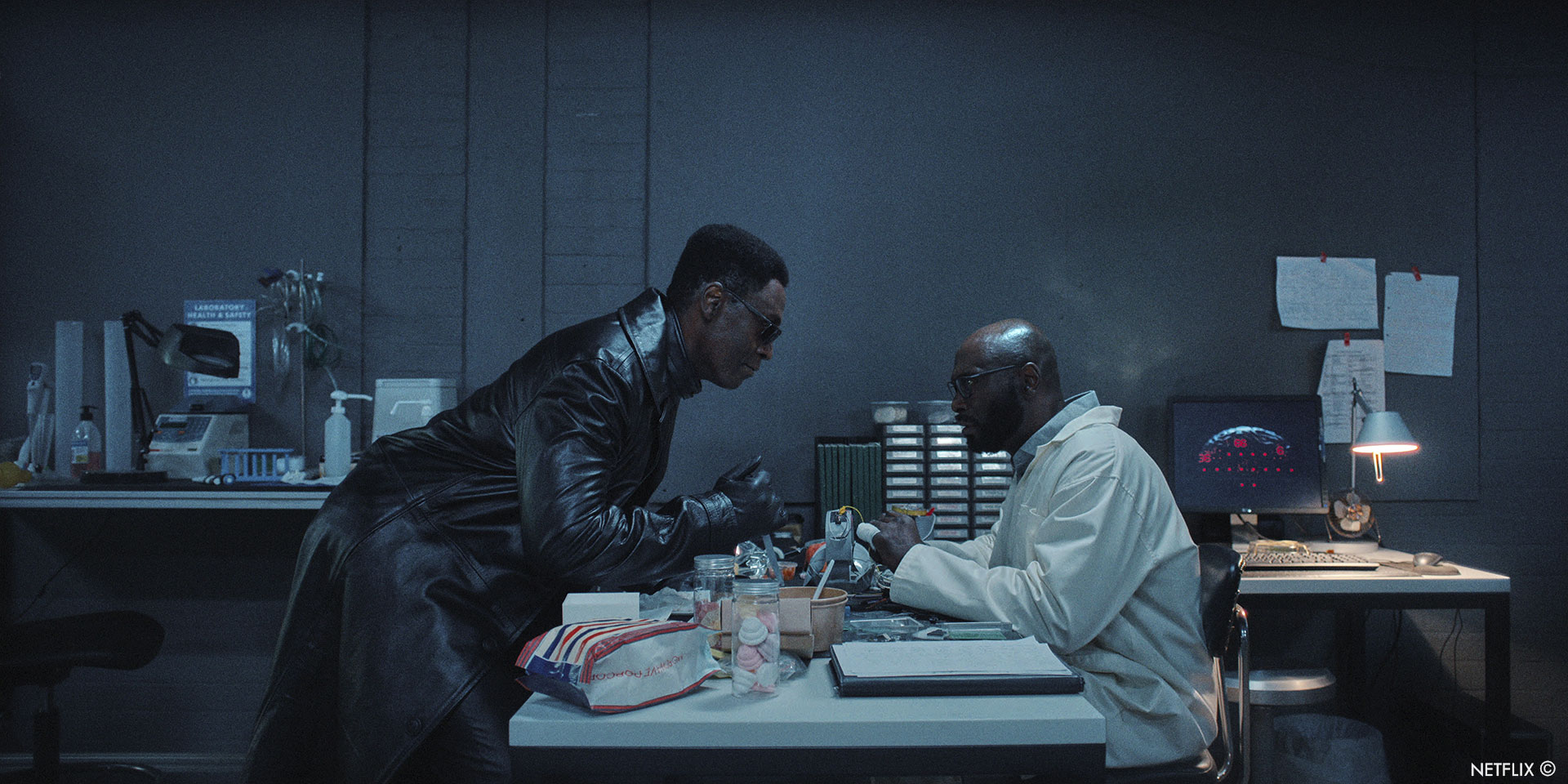
Did you want to reveal to us any other invisible effects?
Mr. Wolf is one of our unsung heroes of the series. Most of their work is invisible and will go unnoticed. The buildings in the first sequence where the Zeros are introduced as Jade uses the rabbit as bait, all had to be degraded from the 2nd floor up. Only the street level areas of the buildings had been dressed before shooting and any area above that stood out like a sore thumb – all pristine, unaffected and too bright. Broken windows, broken railings, dirt, rain stains, etc were all meticulously tracked and composited into each shot with Zeros rotoscoped as they overlapped the buildings. They also did the majority of muzzle flash and casing ejections along with impact hits and blood. Including the Baxter Oner from Episode 4. Where he goes from using an AK-47 with bayonet and 2 pistols to make short work of Zeros and the Brotherhood.
Which sequence or shot was the most challenging?
Probably the very first (major) VFX shot in the series – the close-up of Jade with her face near the ground as the camera tilts up with her to reveal destroyed London in the BG circa 2036. We filmed it outside on an incomplete section of one of Cape Town’s freeways. With a 10’x10’ bluescreen behind Ella.
It was one the the first VFX shots turned over and it just ended being one of those shots I and several others were not happy with until right before the series delivered. It was by no means the fault of the Vendor, just one of those shots compromised by using a bluescreen. It’s one the reasons I tend not to use blue or greenscreens and rather rely on roto to preserve natural lighting. Oddly, the second, wide, shot was more complex and had a lot more going on ended up being easier to Final.
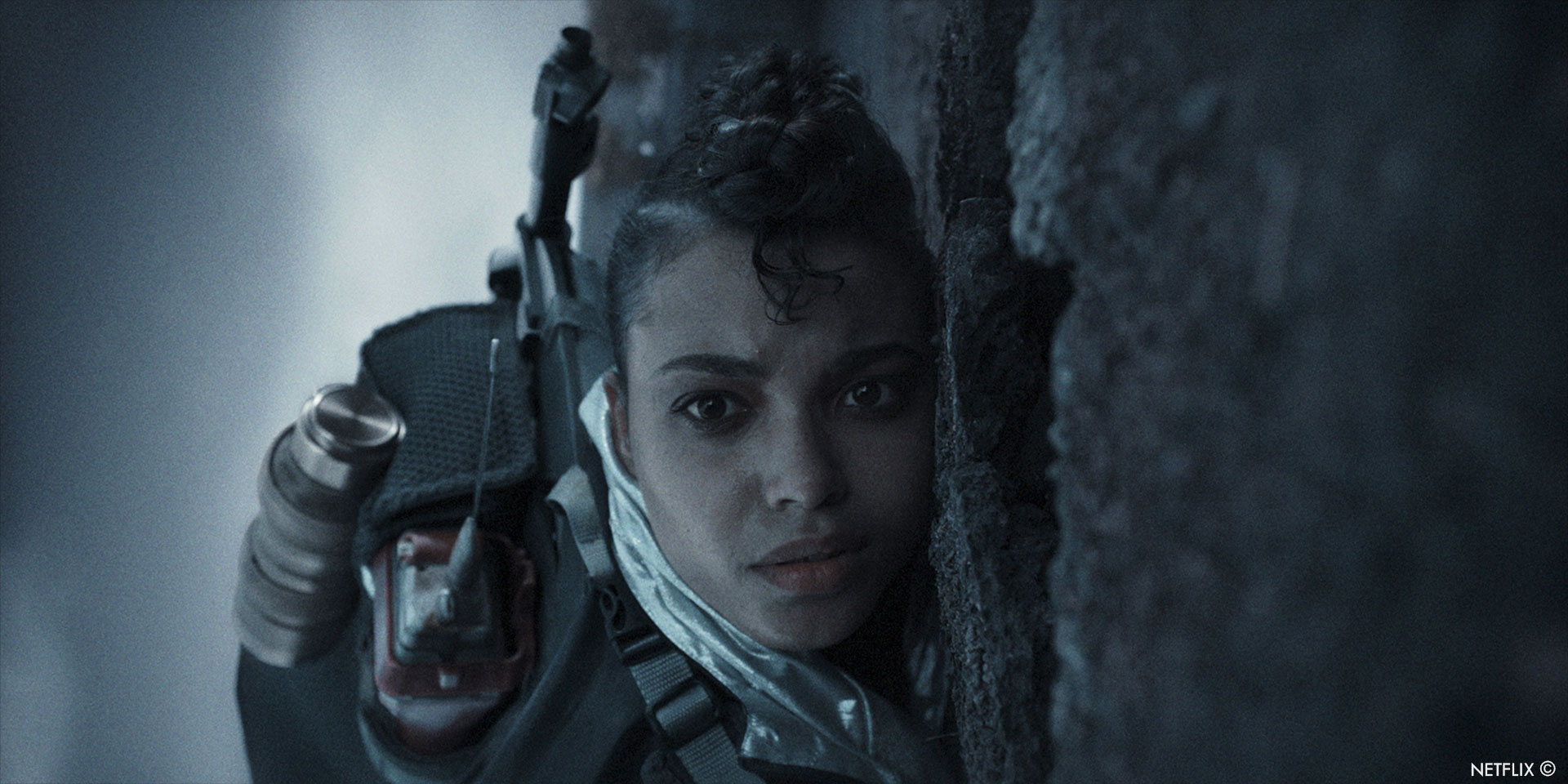
Is there something specific that gives you some really short nights?
Trying not to dwell too much on how the show will be received by the diehard Resident Evil fanbase. We went in an entirely new direction, trying to broaden the appeal of the series beyond the built-in game fanbase.
What is your favorite shot or sequence?
That is a tough one… I’m proud of everything that was achieved in the series, it’s incredibly difficult to pick just one sequence.
What is your best memory on this show?
Working with the South African crew, the incredible cast and living in South Africa for six months is something I will never forget!
How long have you worked on this show?
I was onboard in an early capacity around April, 2020 working with the Production Designer and Showrunner – right around the time the COVID-19 Pandemic took hold and caused a six month delay.
What’s the VFX shots count?
1,645 VFX shots.
What is your next project?
I just finished Supervising a 3D Billboard marketing promo for the series done by Tippet Studio, now playing in Times Square. Also doing some consulting for Netflix. Pending on the success of Season 1, the plan is to roll into Season 2.
What are the four movies that gave you the passion for cinema?
Only four? I’d have to go with… Star Wars, Alien, The Thing, Die Hard and Akira – sorry I know that’s five!
A big thanks for your time.
// Resident Evil – The Most WTF Moments – Netflix
WANT TO KNOW MORE?
Netflix: You can watch Resident Evil on Netflix.
Rodeo FX: Dedicated page about Resident Evil on Rodeo FX website.
© Vincent Frei – The Art of VFX – 2022




